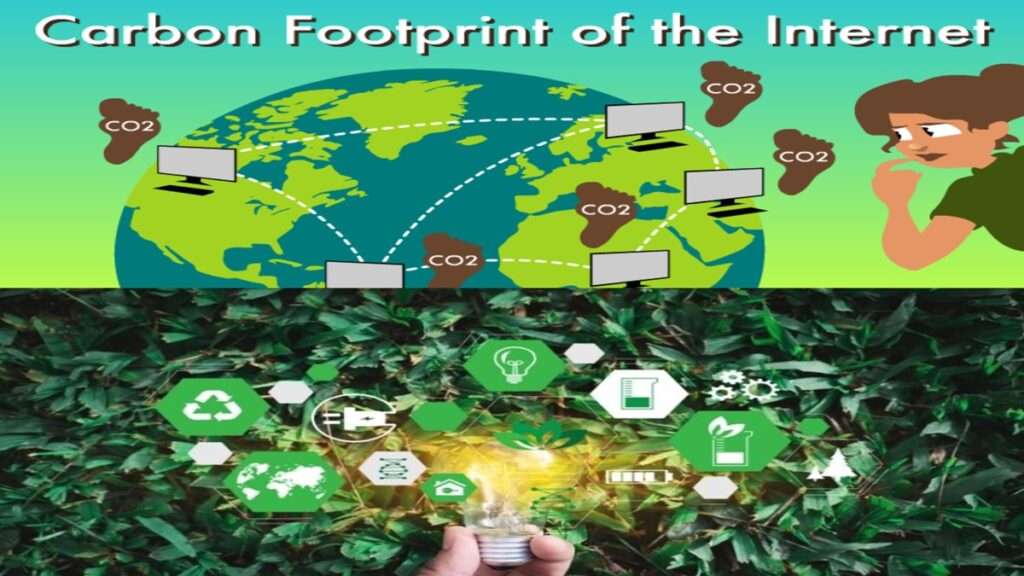Eight practical ways to reduce digital carbon footprint

Our online activities in the current digital era greatly increase carbon emissions and degrade the environment. Every click and download leaves an ecological trace, whether it’s for cloud storage or video streaming. However, we can reduce our digital carbon footprint and help create a more sustainable future by making a few small but deliberate changes. We’ll look at eight useful tactics in this post to assist you in lessening your online environmental effect.
Table of Contents
Recognizing Your Digital Carbon Footprint
Your internet usage, data storage, and device manufacture all have an influence on the environment. This is known as your “digital carbon footprint.” It includes the amount of energy used, the production of electronic trash, and the greenhouse gas emissions brought on by digital infrastructure and operations.
Here are eight practical strategies to reduce digital carbon footprint
1. Adjust the Device’s Settings
To cut down on energy usage, start by adjusting the settings on your gadgets. When your gadgets are not in use, turn on power-saving modes, change the brightness of the screen, and shorten the sleep or standby periods to save energy. Additionally, think about utilizing appliances and gadgets that are recognized energy-efficient by organizations like ENERGY STAR.
2. Simplify correspondence via email
Even though emails seem innocuous at first, the energy needed to send, store, and process digital messages builds up over time. By deleting pointless emails, unsubscribing from spam or promotional emails, and sending smaller file attachments, you can lessen the carbon footprint of your communications. In order to lower carbon emissions as a group, encourage contacts and coworkers to implement email best practices.
3. Adopt Cloud Computing
A more energy-efficient option to conventional on-premises data processing and storage is provided by cloud computing. Reduce the requirement for physical servers and hardware infrastructure by centralizing your digital files and documents on the cloud. Select trustworthy cloud service providers who run their businesses using carbon neutrality and renewable energy.
Read Also: How climate change ignites wildfires
4. Engage in Mindful Broadcasting
You can increase your digital carbon footprint by streaming music, films, and other digital content, which uses a lot of energy and bandwidth. Limit the amount of time you spend streaming, save content for offline viewing, and choose lower resolution settings when you’re streaming. Think about endorsing platforms that put an emphasis on renewable energy sources and energy-efficient streaming technologies.
5. Increase Device Life
Carbon emissions and electronic waste are caused by the manufacture and disposal of electronic equipment. Invest in robust, repairable items, carry out routine maintenance, and install software updates to extend the life of your gadgets. When it’s time for an upgrade, think about properly recycling or donating your outdated electronics to reduce your influence on the environment.
6. Use Less Internet Data
Every online activity uses data and energy, from social media conversations to web browsing. Optimize your online browser’s settings, turn off auto-play video, and use browser extensions to block trackers and advertisements to cut down on the amount of data you need for the internet. To save energy and bandwidth, use versions of websites and apps that are simple or text-only.
7. Reduce Your Carbon Footprint on the Internet
In order to mitigate the environmental impact of your online actions, you can offset your digital carbon footprint by contributing to renewable energy projects or carbon offset efforts. You may quantify and offset your carbon footprint with monetary contributions thanks to the many organizations that offer carbon offset programs specifically designed for digital emissions.
8. Educate and Speak Up
Finally, spread awareness among others and yourself on how digital technology affects the environment and how crucial it is to lessen our digital carbon footprint. To spread awareness and encourage group action, share resources, best practices, and information with friends, family, coworkers, and online communities. Encourage the adoption of laws and programs that advance sustainability, energy efficiency, and the use of renewable energy in the digital industry.
In summary
A crucial first step in creating a more environmentally friendly and sustainable digital future is lowering your digital carbon footprint. You can lessen the influence you have on the environment and support international efforts to address climate change by putting these doable tactics into practice and developing thoughtful digital habits. Keep in mind that every little action matters, and that by working together, we can significantly impact the preservation of our world for coming generations.








